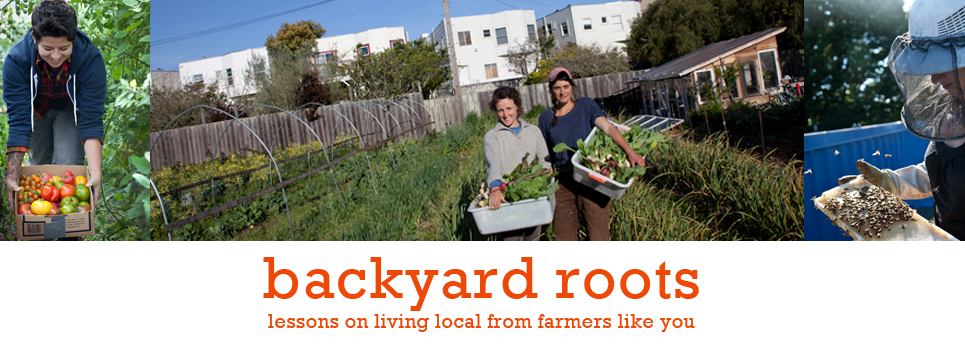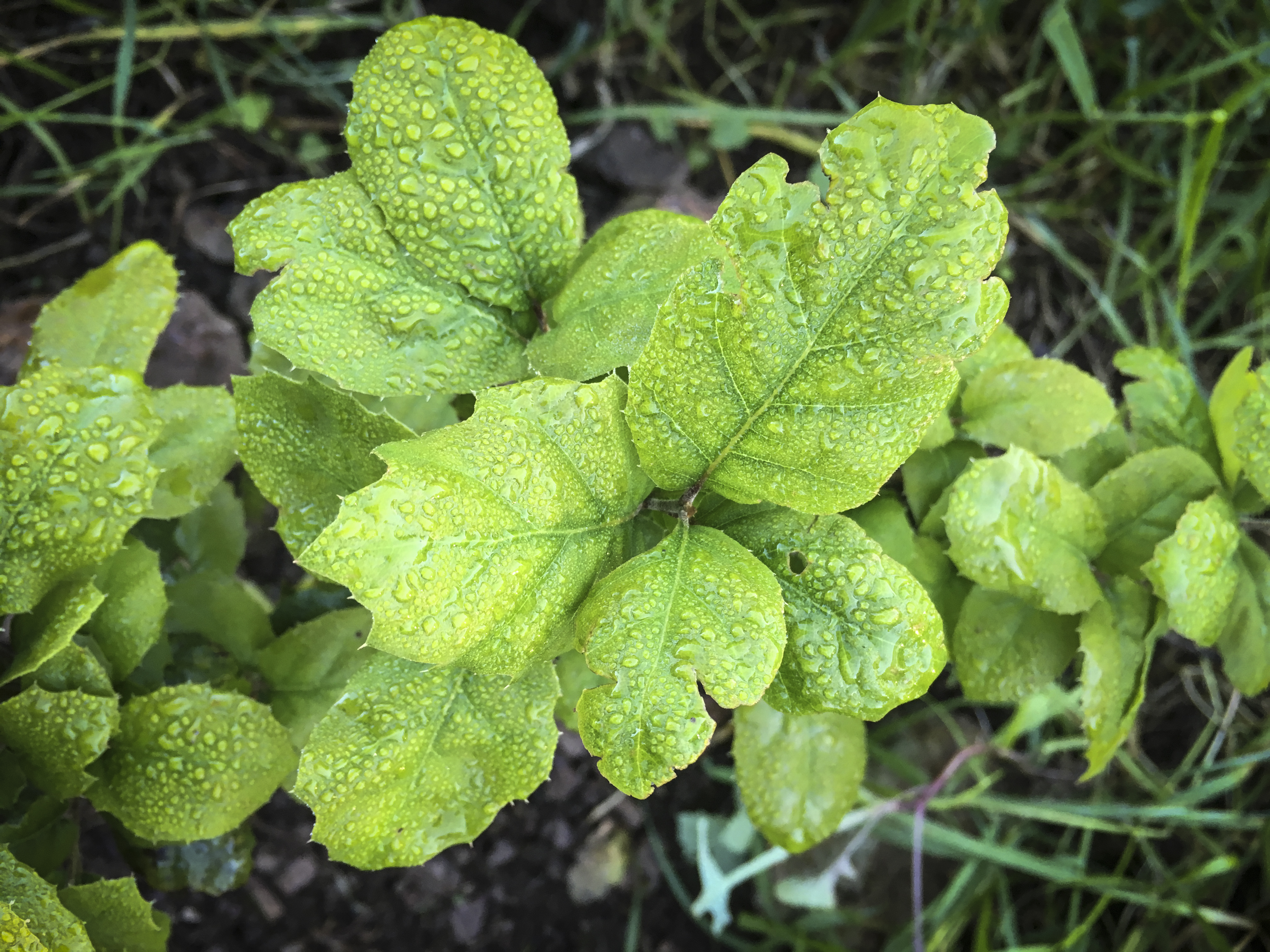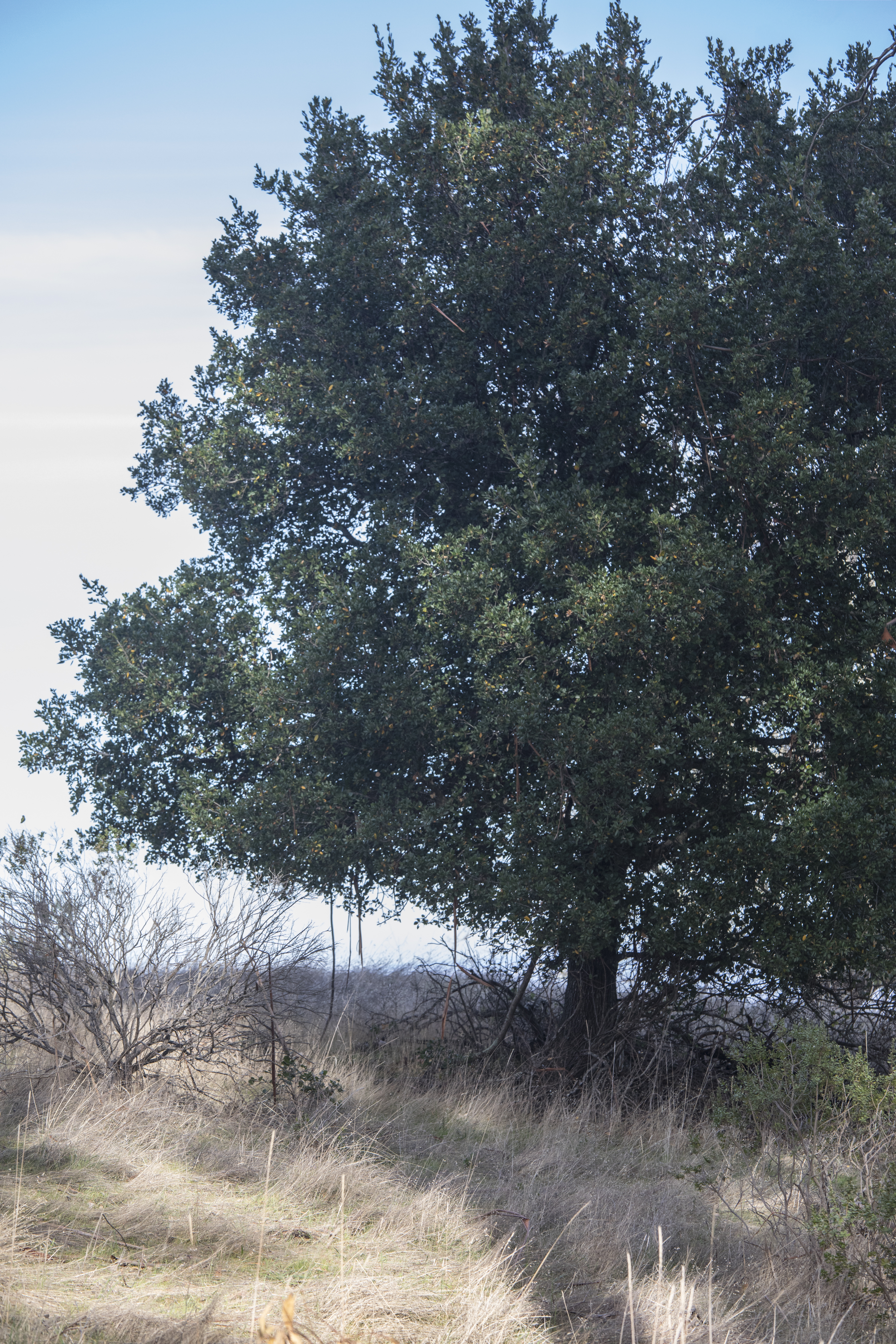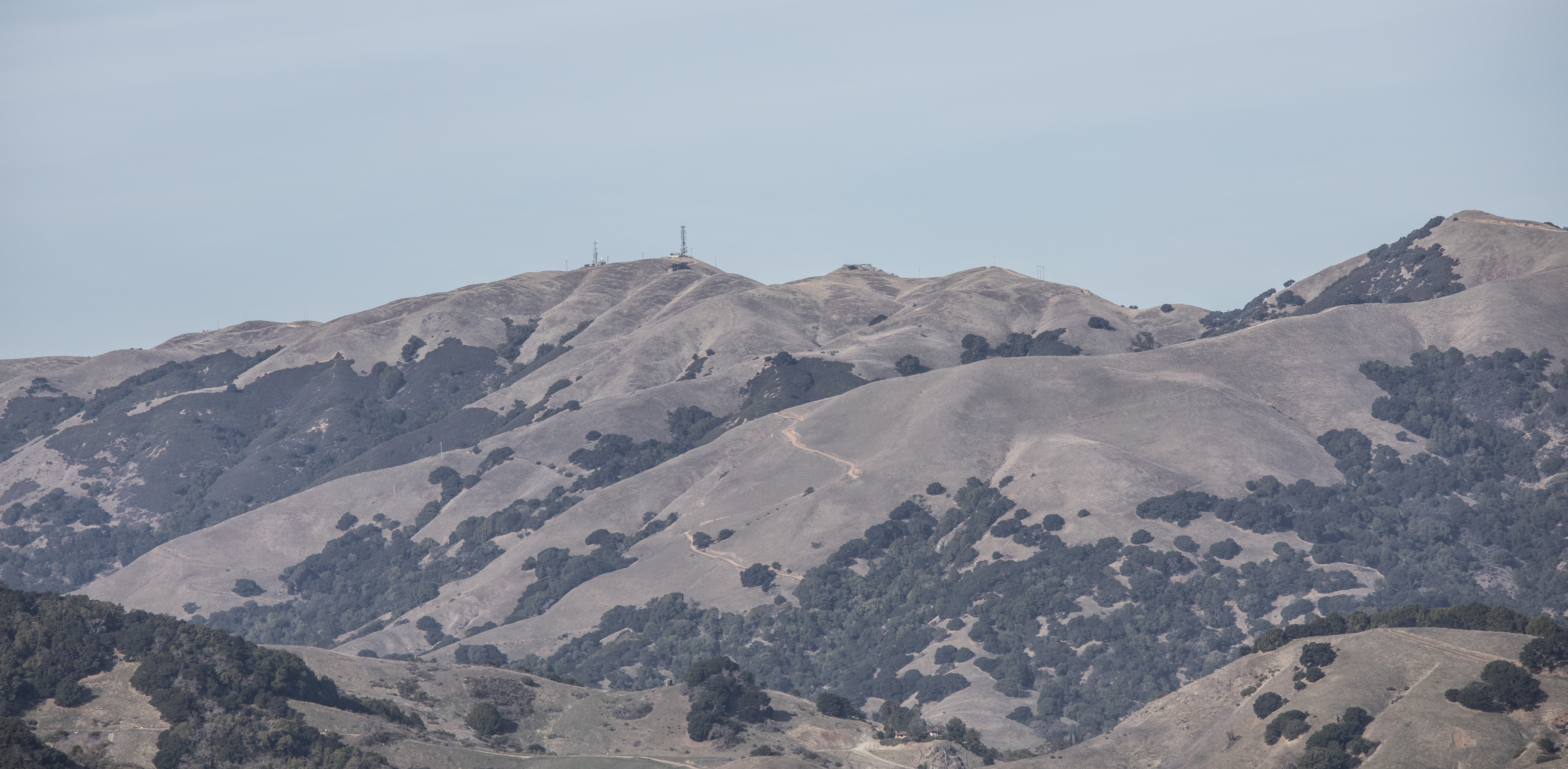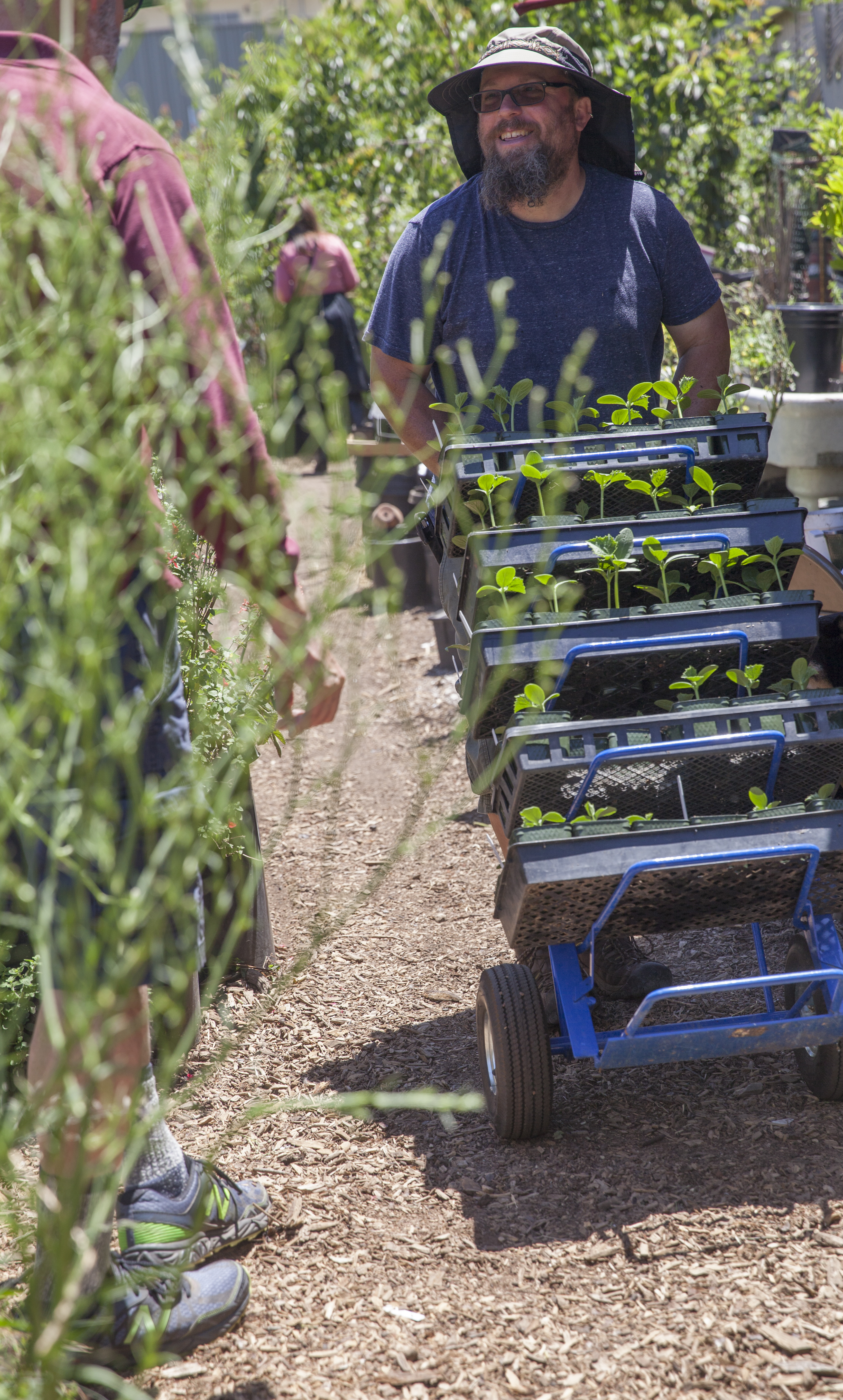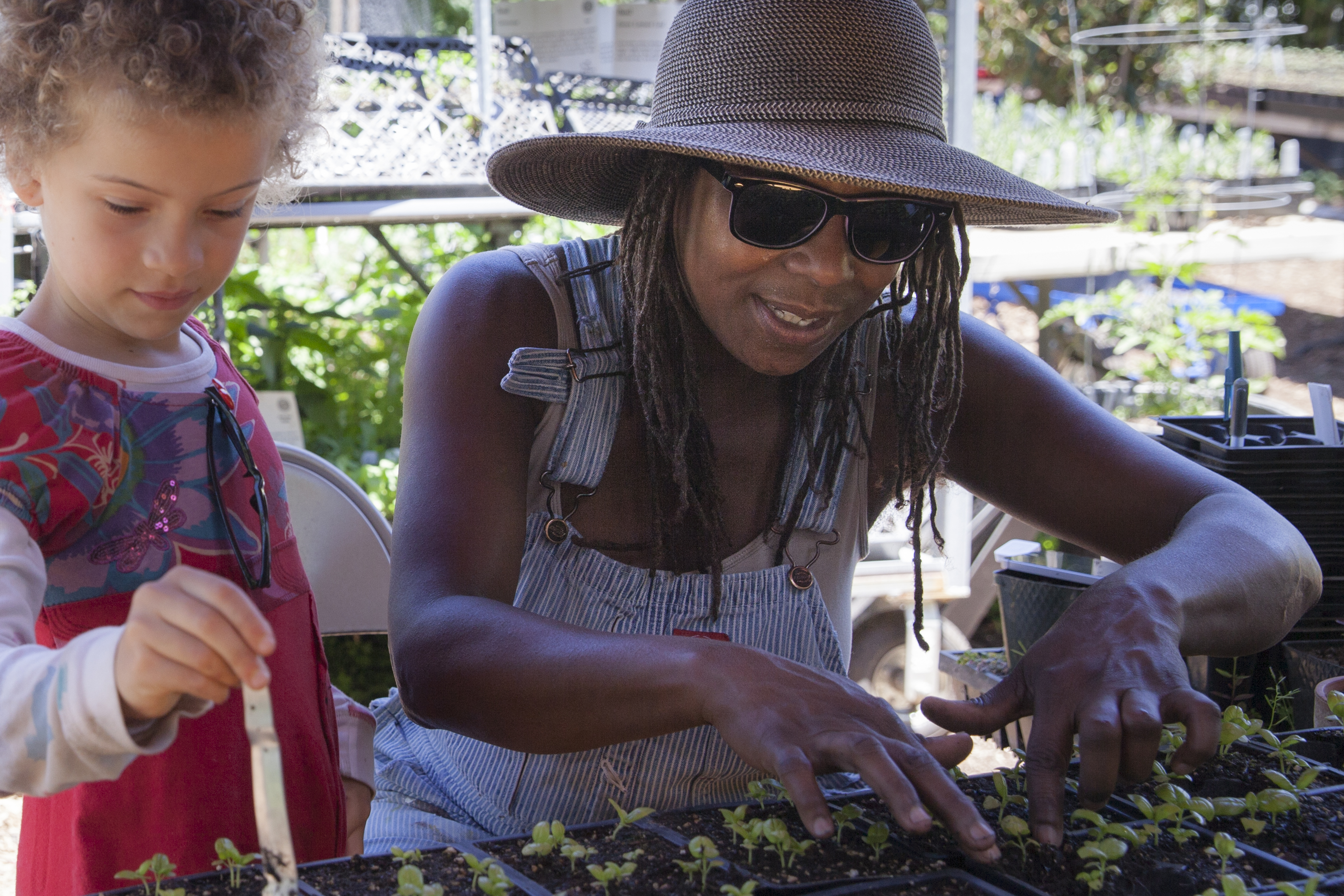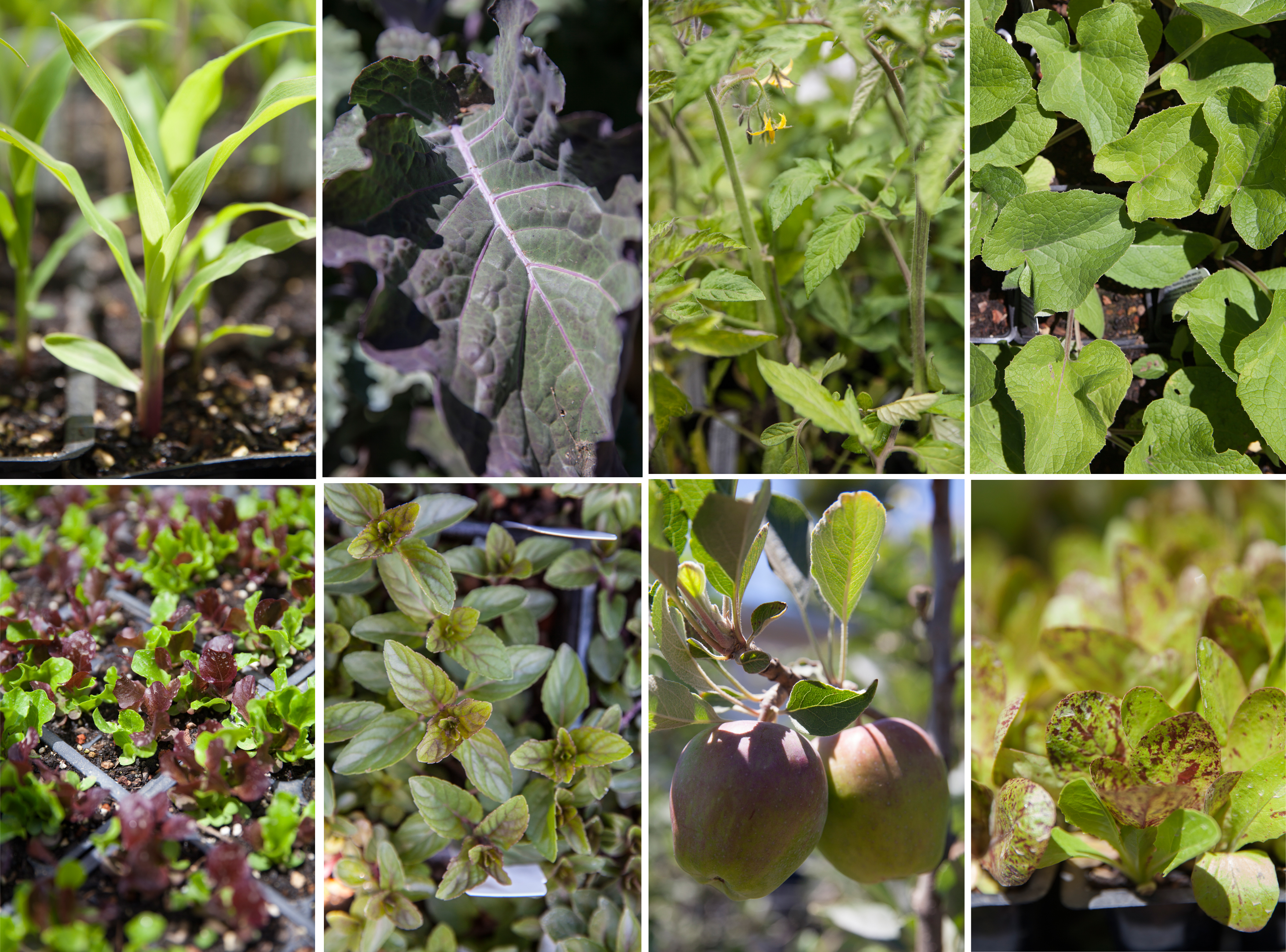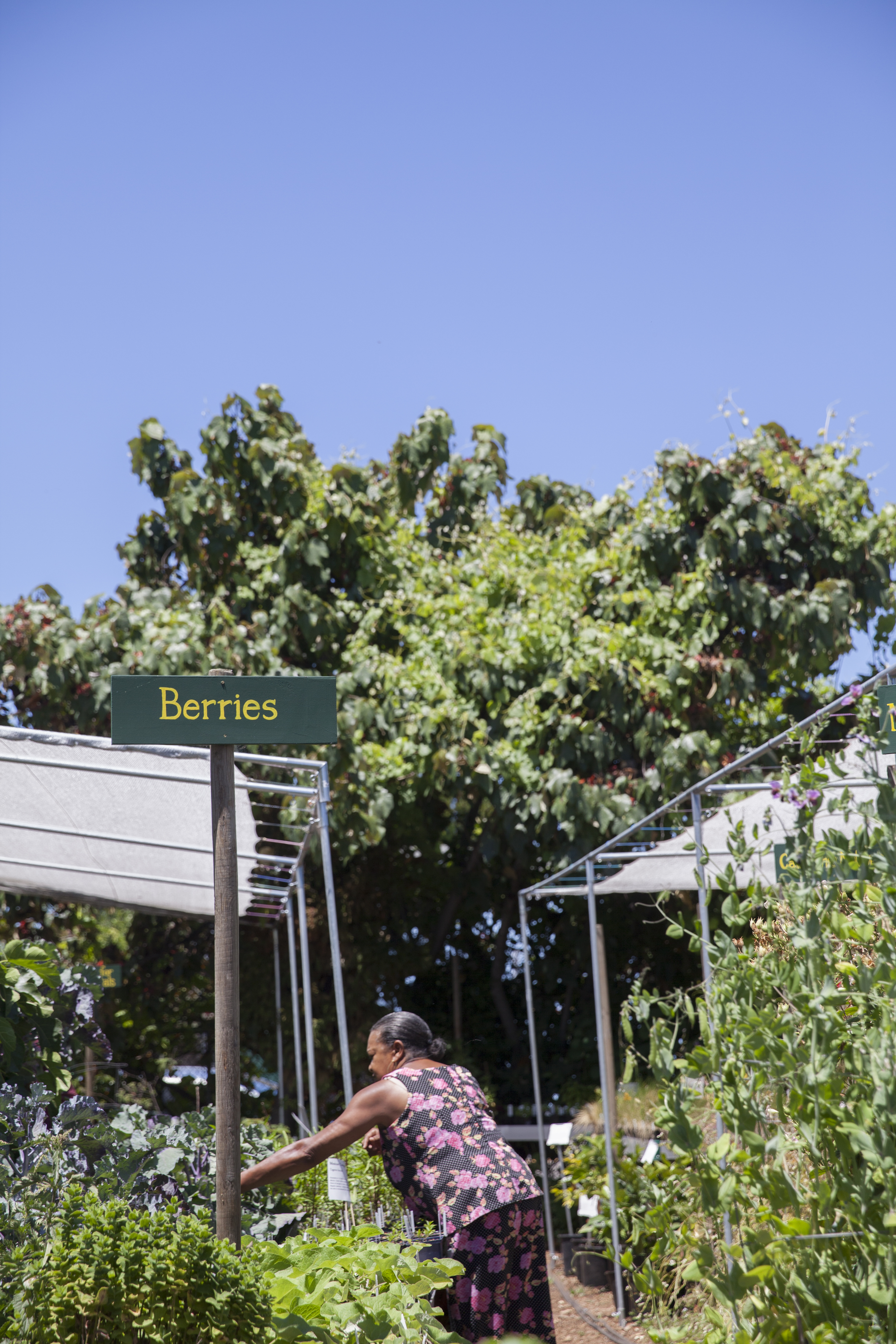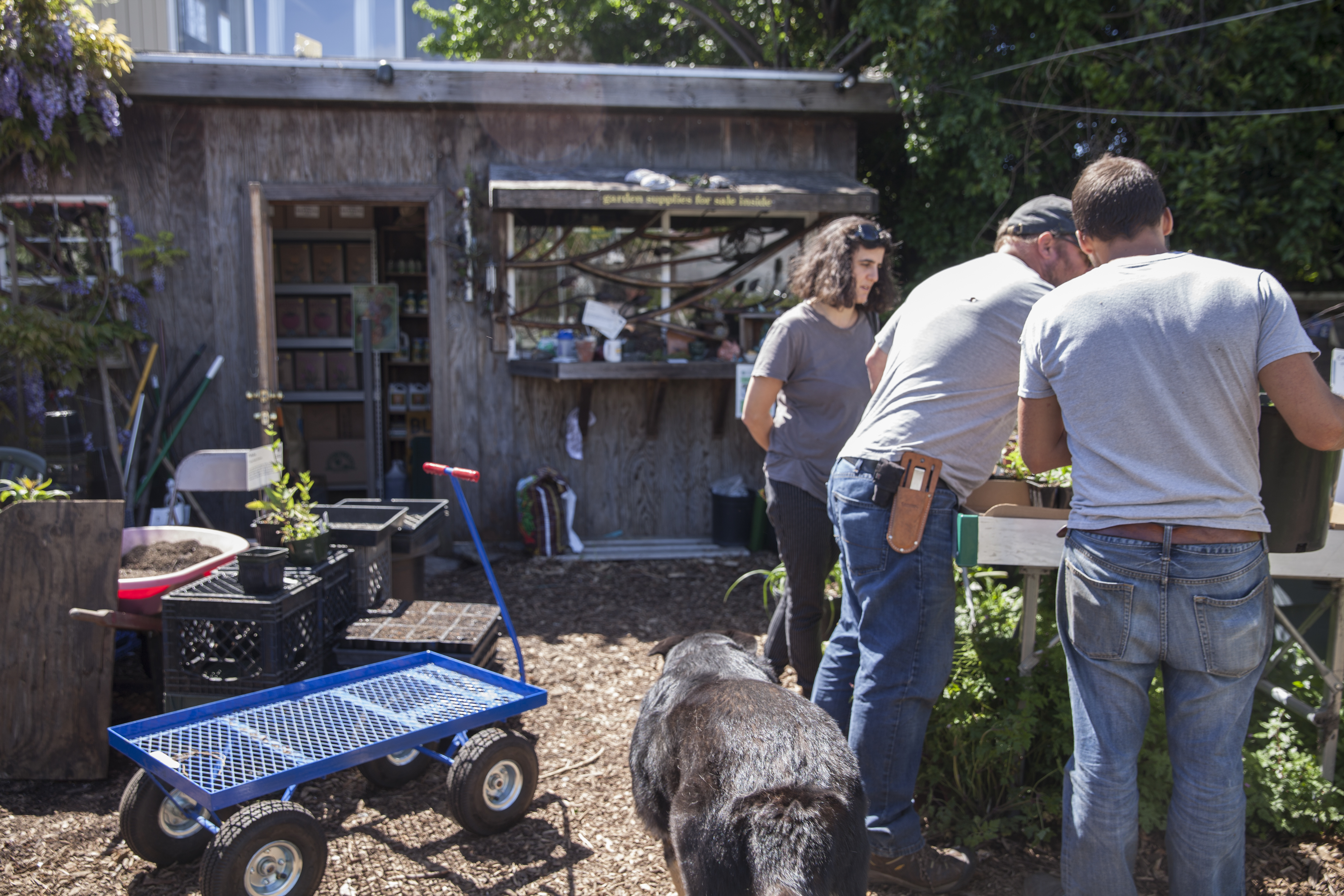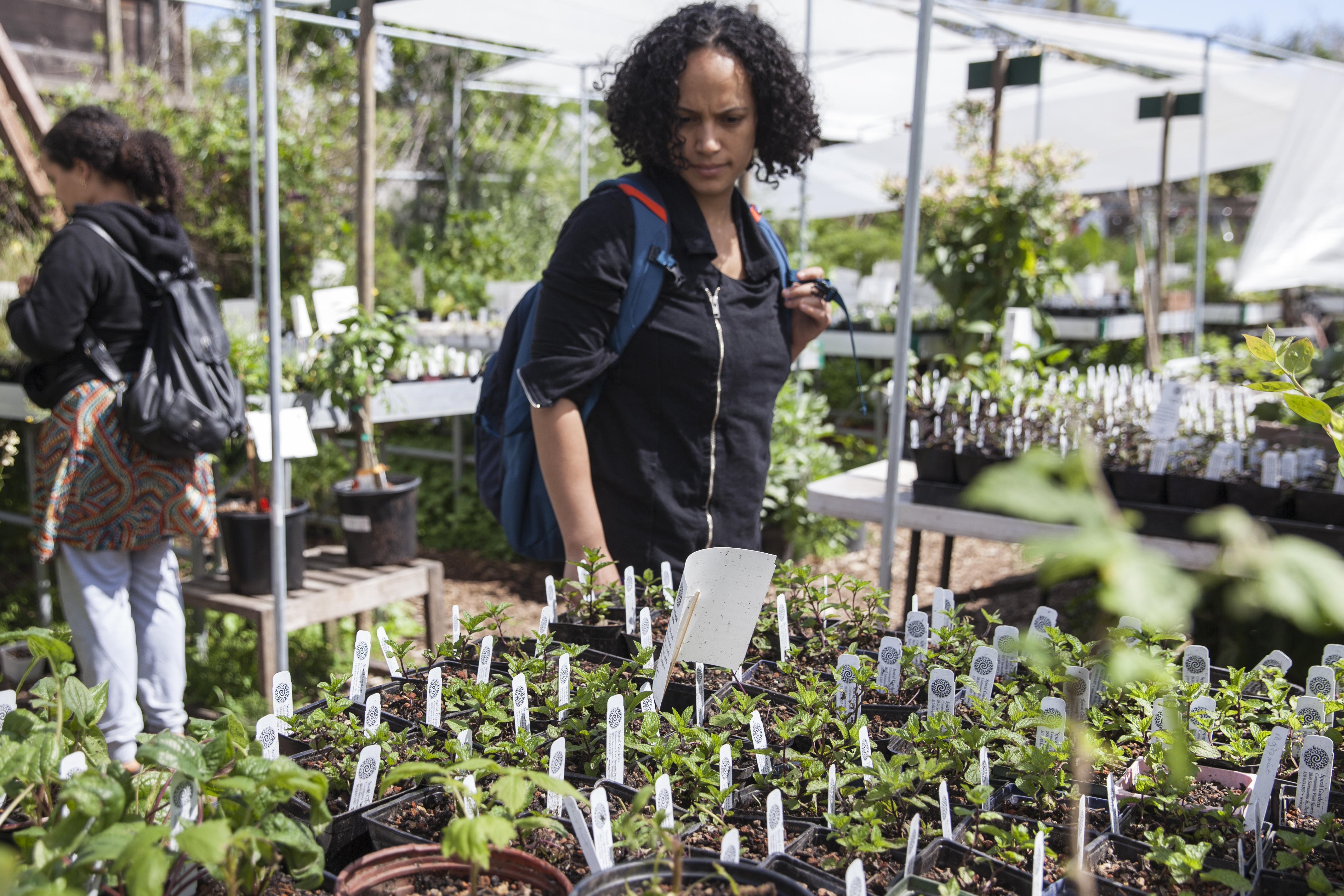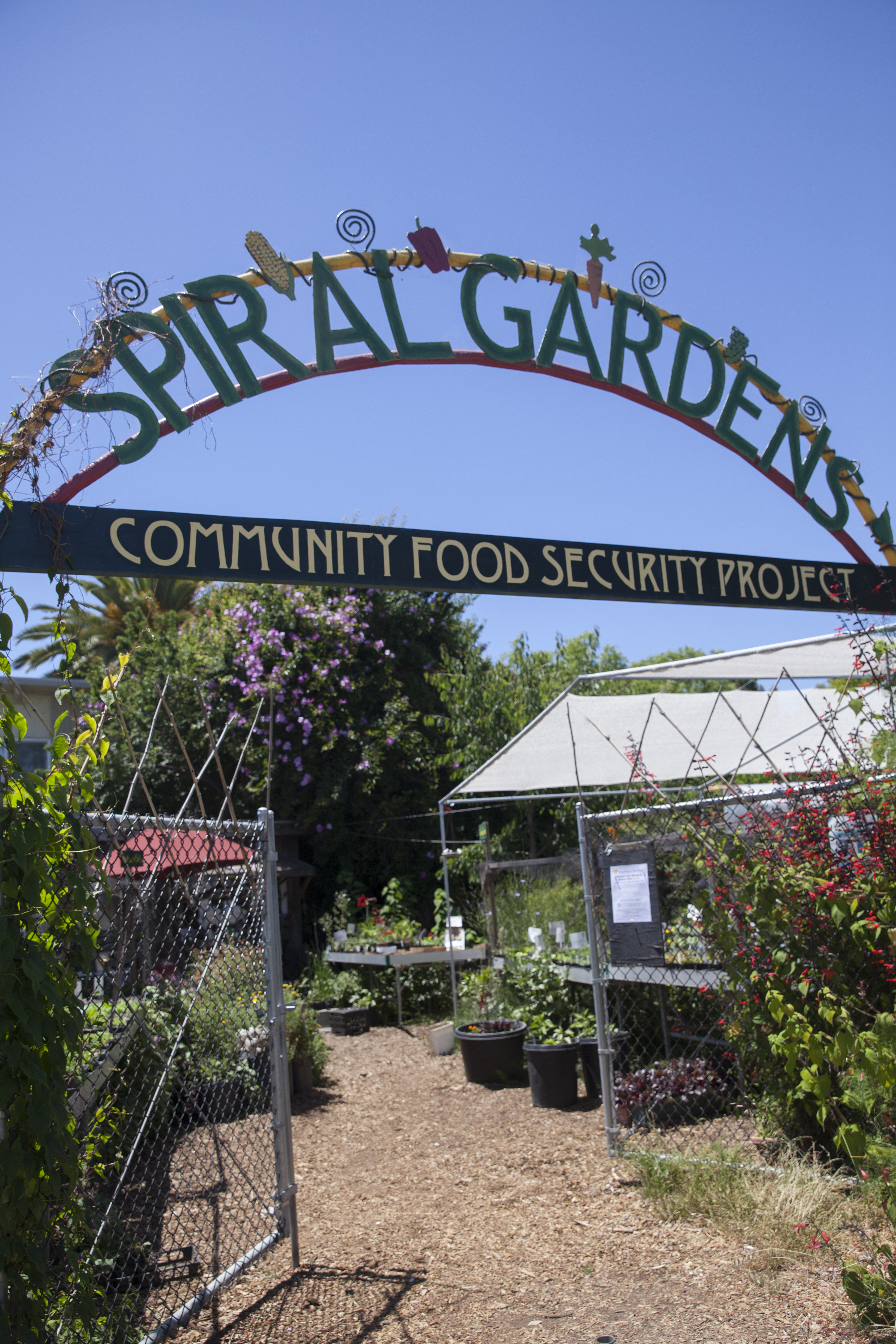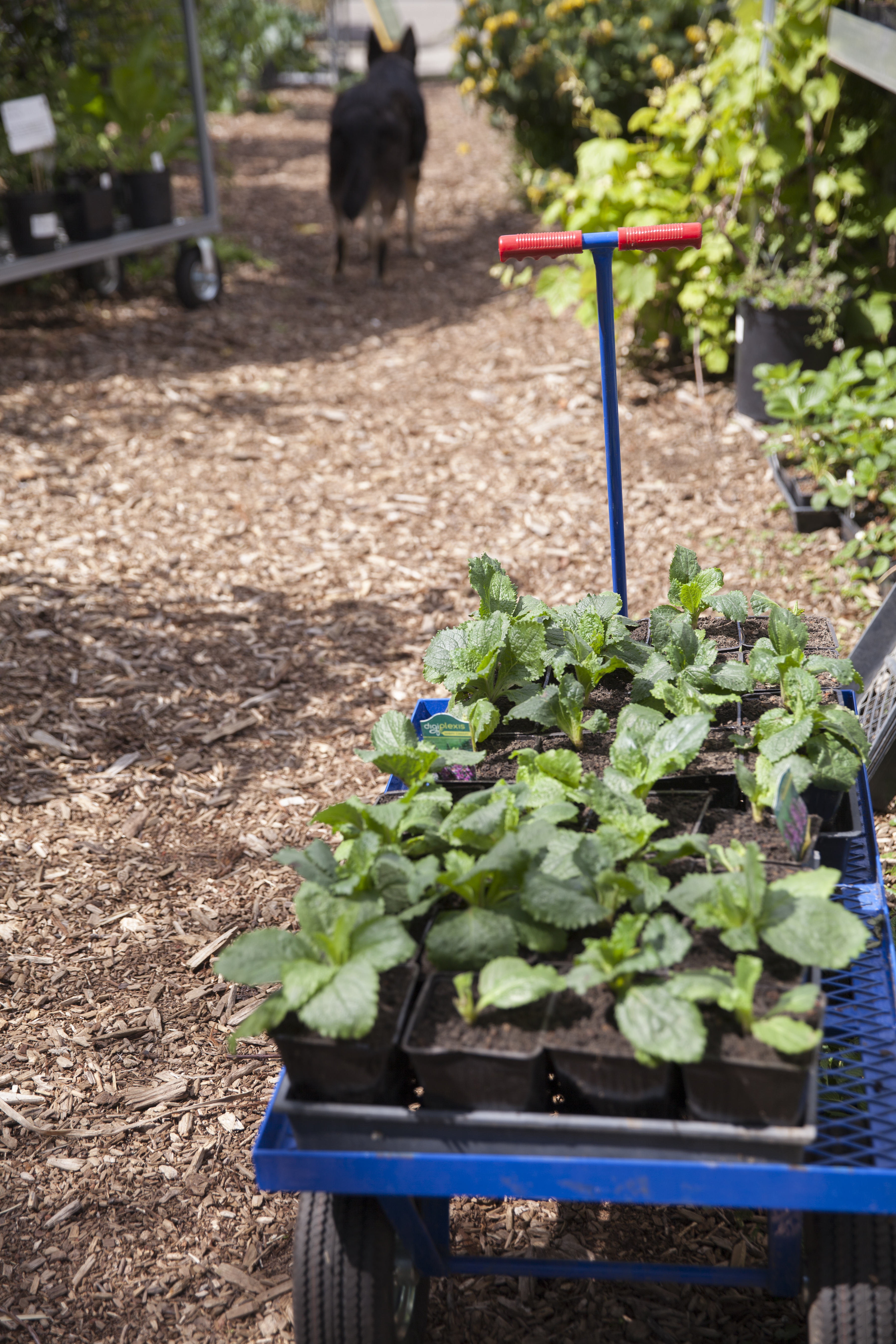“The best time to plant a tree was 20 years ago. The second best time is now.” Chinese Proverb
Rugged and beautiful, coast live oaks are the backbone of California coastal woodlands and chaparral. Found within 60 miles of the Pacific Ocean, they are perfectly adapted to summer droughts and winter rains. They can live as long as 250 years and grow up to 20 to 80 feet tall and 30 feet wide depending on where they are planted. Coast live oaks typically have a multi-branched trunk with smooth, thick bark that can become contorted and gnarled as it ages. The leaves of coast live oaks are evergreen and resemble holly leaves. The trees flower in the spring, and the acorns mature about seven to eight months later. Each tree has both male and female flowers. The male flowers have pendulous catkins. The female flowers are tiny, inconspicuous clusters.
If your yard has enough space, coast live oaks can be a focal point in a drought-resistant native garden that needs little care and will attract birds and wildlife. Companion plants include ceanothus, manzanita, California buckwheat, toyon, coffeeberry, and many other natives.
If your yard is too small, find some open space nearby that needs habitat restoration. Coast live oaks are one of the most important trees for wildlife. Native birds and mammals depend on their acorns and use the trees for shelter. Oaks are host plants to five native butterflies: California sister, propertius duskywing, mournful duskywing, golden hairstreak, and gold-hunter’s hairstreak.
With the recent stories of destructive wild fires and mudslides in California planting coast live oaks is more important than ever. The vast root systems of these tough natives help stabilize hills, prevent erosion and improve the watershed far better than most non-natives. They are also exceptionally fire resistant more so than most other oaks. They have very thick bark and reserves in their extensive root systems and can resprout even several years after a fire. One study found that after eight years, 96 percent have recovered. (US Forest Service-Quercus agrifolia)
Winter is the perfect time to get a coast live oak started. Collect acorns from a local tree. Look for brown or green acorns that have fallen from the tree. The caps should separate freely and the acorns should not have discoloration, holes, or stickiness. Acorns don’t store well, so plant them soon after collecting them. It’s a good idea to start them in pots, the acorns about one to two inches deep. Protect the planted acorns from birds and squirrels. Transplant them after their first leaves appear, and water them every two to three weeks if it doesn’t rain. If acorns from a local tree are unavailable, check your local native plant nurseries for seedlings.
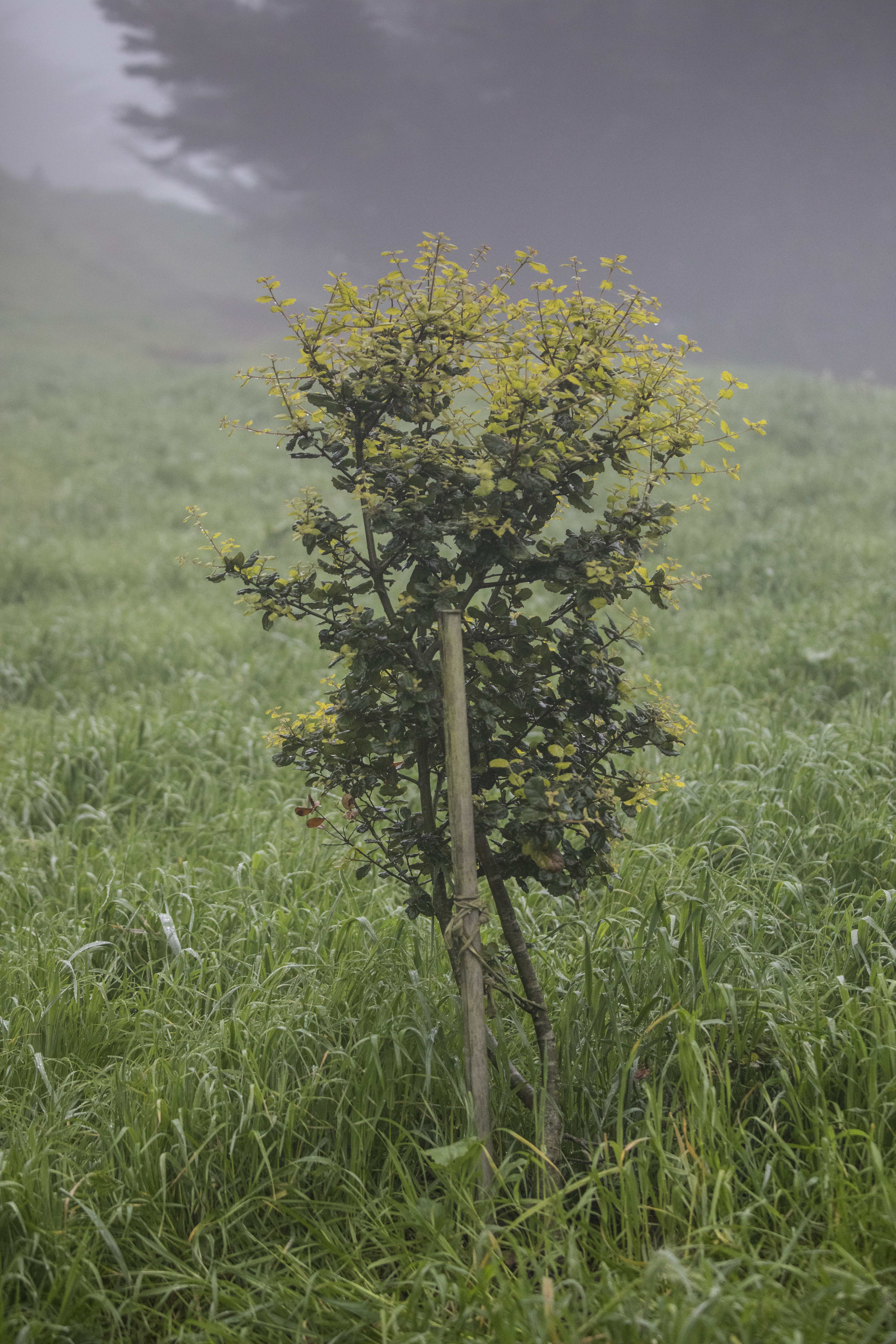 Pick the site wisely. Take care to find a spot where rainfall naturally drains but never where the roots will stay soggy year-round, as the roots are susceptible to rot and the mature trees do not like summer water. A furrow in a hill, or an area with good, loamy soil can work well.
Pick the site wisely. Take care to find a spot where rainfall naturally drains but never where the roots will stay soggy year-round, as the roots are susceptible to rot and the mature trees do not like summer water. A furrow in a hill, or an area with good, loamy soil can work well.
Plant them during winter rains when oaks do their growing. Be sure to pick a location with plenty of spreading room. If possible find a spot with nearby oaks. Mature trees form a obligate relationship with mycorrhizal fungi, so if you plant a seedling near a larger oak the fungi associated with the older tree will help the younger tree.
Dig a hole for your seedling twice as wide as the width of your pot and and least six inches deeper. Before removing the seedling from its pot, water it thoroughly. Turn the pot upside down and tap the rim to dislodge the root ball. Loosen the roots and place the root ball in the hole. Make sure the top of the root ball is level with the ground, then back-fill the hole. Water. Don’t fertilize or use potting soil, but do mulch around the base to keep weeds down. Water once a month for the first year, but don’t fertilize. Eventually the tree’s own leaves will form a thick mulch that will feed the mycorrhizal fungi that help the tree. Depending on location and rainfall the seedling will grow from several inches a year to up to 24 inches a year.
There’s a lot of of information about coast live oaks on the Web. Here are several recommended sources:
USDA NRS Coast Live Oak Plant Guide
California Native Plant Society- Coast Live Oak
US Forest Service-Quercus Agrifolia
